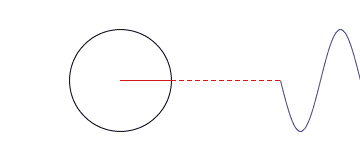Ain't no such thing as RIAA EQ'd tapes, master or otherwise.
RIAA EQ is applied to the cutter head coils.
What many appear to be confusing is the use of so-called "EQ'd limited copies" as the source tapes for many (but certainly not all) early CDs.
Some background:
When a lacquer is created for vinyl production, there are only so many pressings that can be derived from said lacquer. When an album was expected to sell in large numbers, more than one lacquer was needed. Sometimes the additional lacquer(s) might be needed for additional pressing plants. Sometimes the additional lacquer(s) might be needed at a later time.
An easy way to preserve all the mastering "moves" (i.e., processing, EQ, level changes, etc.) was to run a second tape recording in the mastering room. The first machine played back the master, with the signal being fed to the cutting console, any hardware inserted into the chain and ultimately to the cutting amplifiers for the cutter head. The output of the console (containing all the mastering changes but *not* any RIAA EQ, which as I said, is applied to the coils of the cutter head) is fed to the second tape machine, which captures the "mastered" sound onto a new tape. This new tape becomes the "EQ'd limited master" since it contains all the "EQ and limiting" applied during mastering.
When more lacquers are needed, the EQ'd limited tape can be used, even by another engineer at another mastering facility or perhaps by a night-shift trainee to (theoretically) create new lacquers that sound the same as the original.
Now, in the early days of CD, some folks in the record industry wanted the CD to "sound like" the vinyl -- in other words, to contain all the changes wrought in the mastering room when the lacquer was cut for vinyl. These changes could include things like changes to the speed of a given track (a slight speeding up or slowing down if the producer decides after the mix, that the song would be better served by a slight tempo change) in addition to all the other possible changes to the original that might have been decided upon in the mastering room.
It should be remembered that in most cases, the "master" that comes out of the mix room is not necessarily (and in fact more often than not, *isn't*) intended as the final master. Civilians often tend to get confused about exactly what a master is. Well, there is the original recording - the first time the sounds are captured, which is referred to as the "master". Most times, this is a multitrack intended to be "mixed down" to stereo (or sometimes surround), where instrumental balances, placement and tonality are manipulated to create the intended stereo (or surround) "master". Once this has been created, there will often be a session or two in the editing room to create (you guessed it) the "master". Then, when everyone is (mostly) happy, this is taken to the mastering room where the engineer will create the "master". (Please read all this again as it *will* be on the test. ;-})
Among the many problems that arise when taking the convenience of using an EQ'd tape made during vinyl mastering as the source for a CD master is that in addition to all the production decisions regarding music and sound, there are manufacturing decisions, many of which, in my opinion, work against getting the best possible results. For starters, many vinyl cutters will routinely apply certain processes because these make for easier lacquer creation (i.e. fewer "blown" lacquers"). Often (too often in my view), bass is rolled off, high top end is rolled off and the bass that remains is "matrixed" into mono. (I've known "mastering engineers" who would set up many of these things *before* they've even listened to what they are about to master!)
Ideally, the CD mastering engineer will be given access to *all* the tapes so the mastering engineer can determine which, if any, changes on the EQ'd tape are relevant to the CD, while still using the same source the vinyl mastering engineer used (i.e., the edited, mixed "master"). It if often useful for the mastering engineer to have access to the multitracks too.
***
As to the question asked in the topic at hand, in my view the answer is very distinctly no.
First, I find that in discussions of this sort, the signal-to-noise ratio (which is what we're really talking about here) is confused with dynamic range, as if the two were interchangeable. While they might be in theory, my experience has been that in practice, they are very, very different.
All one need do is record the same signal into a 16-bit system at many different levels. As the level goes down, quantizing issues go up. Instrumental harmonics become thin, bleached and not at all like the real thing -- or like they are captured at higher levels, where more of the 16-bits are put to use. That low level information, where the harmonics, spatial cues, etc. reside, gets increasingly coarsened as the recorded level goes down. So, while there is no hiss or other steady-state noise to get in the way, sounds recorded toward the bottom of the loudness range change for the worse and (to my ears) in not at all subtle ways.
As always, just my perspective.
Best regards,
Barry
www.soundkeeperrecordings.com
www.soundkeeperrecordings.wordpress.com (The Soundkeeper Blog)
www.barrydiamentaudio.com






